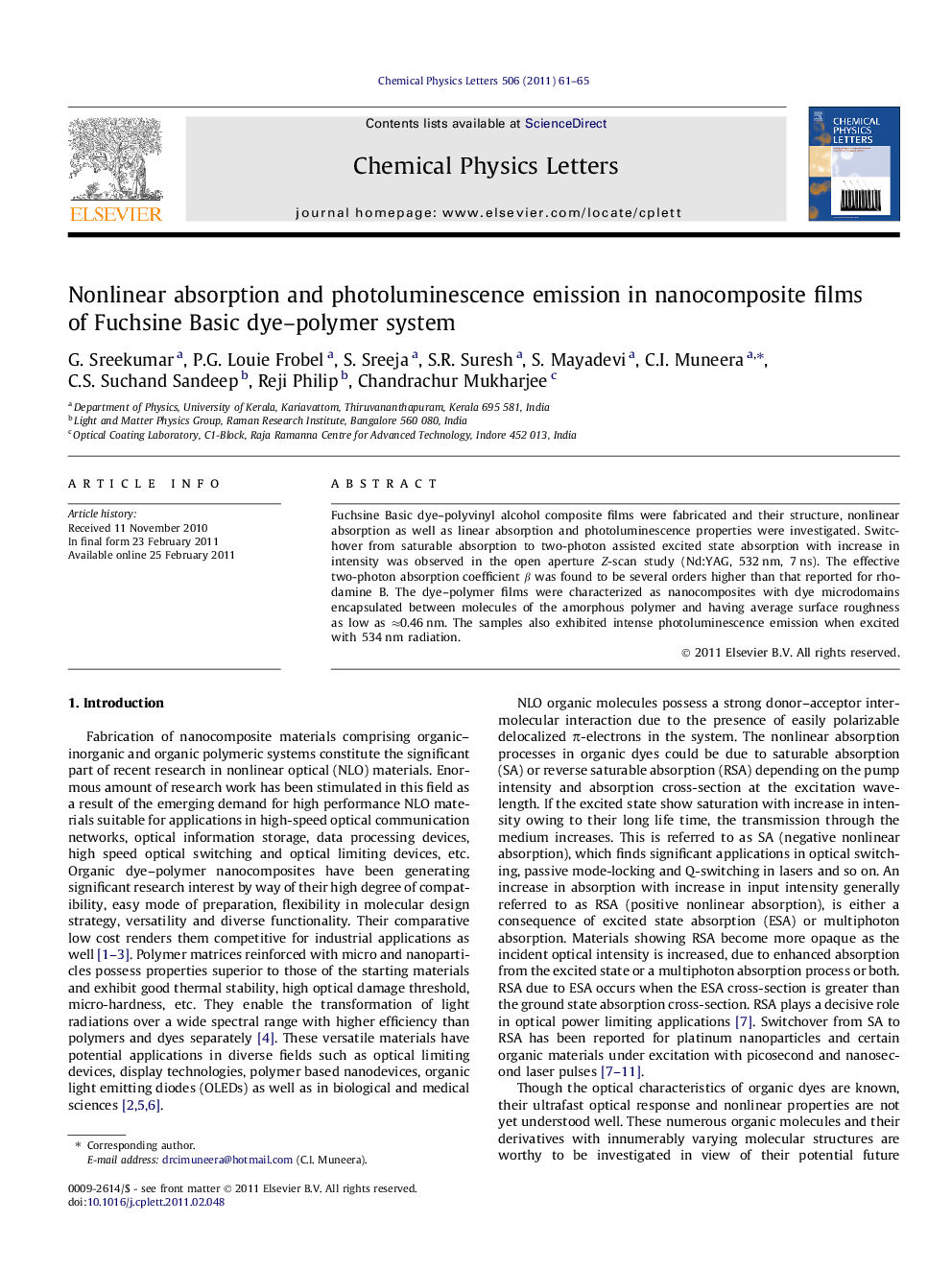| Article ID | Journal | Published Year | Pages | File Type |
|---|---|---|---|---|
| 5384484 | Chemical Physics Letters | 2011 | 5 Pages |
Fuchsine Basic dye-polyvinyl alcohol composite films were fabricated and their structure, nonlinear absorption as well as linear absorption and photoluminescence properties were investigated. Switchover from saturable absorption to two-photon assisted excited state absorption with increase in intensity was observed in the open aperture Z-scan study (Nd:YAG, 532 nm, 7 ns). The effective two-photon absorption coefficient β was found to be several orders higher than that reported for rhodamine B. The dye-polymer films were characterized as nanocomposites with dye microdomains encapsulated between molecules of the amorphous polymer and having average surface roughness as low as â0.46 nm. The samples also exhibited intense photoluminescence emission when excited with 534 nm radiation.
Graphical abstractDownload high-res image (62KB)Download full-size imageHighlightsâºOrganic-polymer nanocomposite films of excellent surface smoothness were fabricated. ⺠In the Z-scan experiment, a switchover from SA to TPA occurred near the focus. ⺠The organic-polymer nanocomposite films displayed intense PL emission at room temperature.
